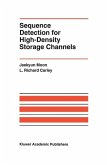Ivan Djordjevic
William Ryan
Bane Vasic
In order to adapt to the ever-increasing demands for high-speed transmission and distance-independent connectivity, today's network operators are implementing 100 Gb/s per dense wavelength division multiplexing (DWDM) channel. At those data rates, the performance of fiber-optic communication systems is degraded significantly due to intra- and inter-channel fiber nonlinearities, polarization-mode dispersion (PMD), and chromatic dispersion. In order to deal with these channel impairments, novel advanced techniques in modulation, detection, coding and signal processing are needed.
This groundbreaking book represents a coherent and comprehensive introduction to the fundamentals of optical communications, digital signal processing (DSP), and coding for optical channels. This book:
- Is the first to integrate the fundamentals of coding theory and DSP with the fundamentals of optical communication;
- Provides detailed coverage of joint coding and modulation for optical communications;
- Presents turbo equalization for joint iterative channel equalization and soft decoding on optical channels;
- Provides in-depth coverage of codes on graphs, including LDPC and turbo codes, and describes their application to optical channels;
- Includes coverage of both fiber-optics and free-space optical (FSO) channels;
- Is the first to cover the channel capacity of fiber-optic communication systems;
- Is the first to describe constrained coding for optical channels.
Dieser Download kann aus rechtlichen Gründen nur mit Rechnungsadresse in A, B, BG, CY, CZ, D, DK, EW, E, FIN, F, GR, HR, H, IRL, I, LT, L, LR, M, NL, PL, P, R, S, SLO, SK ausgeliefert werden.
"This book covers a tremendous amount of ground. It is concerned primarily with the fundamentals of optical communications, digital signal processing and coding for optical channels. A particular strength of the book is its careful treatment of joint coding and modulation for optical communications. ... The exposition is very clear and comprehensive. It should be most valuable to graduate students who are seeking to acquire the broad background knowledge needed to become successful researchers or engineers in optical and wireless communications." (Christian Brosseau, Optics & Photonics News, May, 2011)









